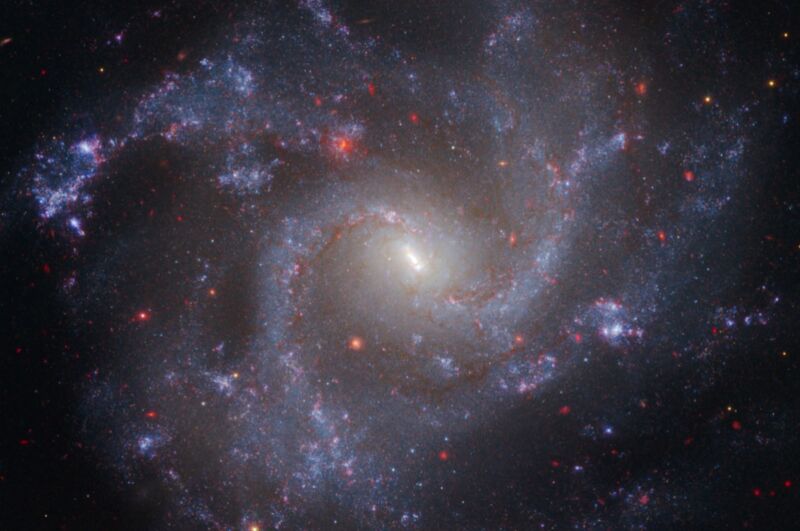
Enlarge / This image of NGC 5468, about 130 million light-years from Earth, combines data from the Hubble and Webb space telescopes. (credit: NASA/ESA/CSA/STScI/A. Riess (JHU))
Astronomers have made new measurements of the Hubble Constant, a measure of how quickly the Universe is expanding, by combining data from the Hubble Space Telescope and the James Webb Space Telescope. Their results confirmed the accuracy of Hubble’s earlier measurement of the constant’s value, according to their recent paper published in The Astrophysical Journal Letters, with implications for a long-standing discrepancy in values obtained by different observational methods known as the “Hubble tension.”
There was a time when scientists believed the Universe was static, but that changed with Albert Einstein’s general theory of relativity. Alexander Friedmann published a set of equations showing that the Universe might actually be expanding in 1922, with Georges Lemaitre later making an independent derivation to arrive at that same conclusion. Edwin Hubble confirmed this expansion with observational data in 1929. Prior to this, Einstein had been trying to modify general relativity by adding a cosmological constant in order to get a static universe from his theory; after Hubble’s discovery, legend has it, he referred to that effort as his biggest blunder.
As previously reported, the Hubble constant is a measure of the universe’s expansion expressed in units of kilometers per second per megaparsec. So, each second, every megaparsec of the Universe expands by a certain number of kilometers. Another way to think of this is in terms of a relatively stationary object a megaparsec away: Each second, it gets a number of kilometers more distant.




















+ There are no comments
Add yours